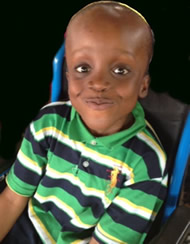
Spina bifida comes from latin word “split spine”. They are birth defects caused by an incomplete closure (an opening) of one or more vertebral arches (lamina) of the spine, resulting in malformations of the spinal cord. The fault in the development of the spinal cord and surrounding bones (vertebrae) leaves a gap or split in the spine.
Depending on the type, they can be potentially life-threatening or result in severe disabilities. These malformations fall into three categories: spina bifida occulta, spina bifida cystica (myelomeningocele), and meningocele.
Types of spina bifida
Spina bifida occulta
Occulta is Latin for “hidden.” This is the “mildest” form of spina bifida although the degree of disability can vary depending upon the location of the lesion and actually be very severe in some patients.
In occulta there is no opening of the back, but the outer part of some of the vertebrae are not completely closed. The split in the vertebrae is so small that the spinal cord does not protrude. The skin at the site of the lesion may be normal, or it may have some hair growing from it; there may be a dimple of hair in the skin, or a birthmark. People with this form may have incontinence, ambulatory problems, loss of sensation, deformities of the hips, knees or feet and loss of muscle tone. Depending on the location of the lesion, intense pain may occur originating in the lower back, and continuing down the leg to the back of the knee. Other related problems that may occur include a Chiari Malformation and tethered cord. Many people with this form do not even know they have it, or symptoms do not appear until later in life.
Spina bifida cystica (myelomeningocele)
In this, the most serious form, the meningeal membranes that cover the spinal cord and part of the spinal cord protrude through a cleft, forming a sac or cyst, and are clearly visible.
The sac or cyst not only contains tissue and cerebrospinal fluid but also nerves and part of the spinal cord. The spinal cord is damaged or not properly developed. As a result, there is usually some degree of paralysis and loss of sensation below the damaged vertebrae. The amount of disability depends very much on where the spina bifida is and the amount of nerve damage involved. Many children and adults with this condition experience problems with bowel and bladder control. In approximately 90% of the people with myelomeningocele, hydrocephalus, extra fluid in the ventricles of the brain, will also occur.
